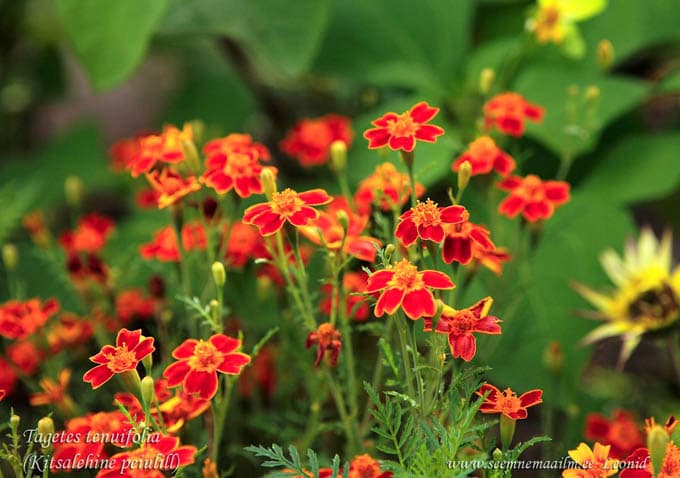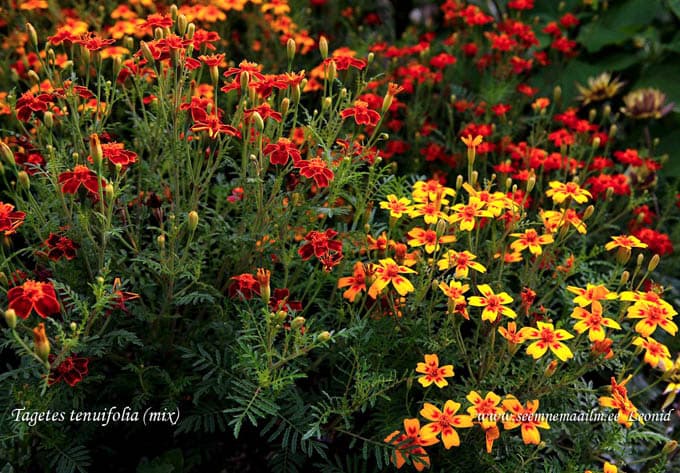The abundance of flowers is amazing!
An elegant spherical bush, very branched, with thin stems and dark green pinnately dissected leaves, 20-30 cm high. The inflorescences are flat, non-double, 3-4 cm in diameter, dark red.
The plant is light-loving and drought-resistant. Prefers fertile and sunny places (can grow in slight shade).
Used to frame flower beds, borders and decorate balconies.

* Marigolds are grown both by sowing in the ground and by seedlings.
The second way is preferable, ensuring the longest possible flowering and immediately, after planting, making the flower garden decorative. Shoots appear 5-7 days after sowing, and after another couple of weeks the seedlings sprout, which contributes to good growth of the root system and the production of strong plants.
Marigold seedlings are usually strong, robust, and not afraid of transplants. Even if the seedlings are grown not in separate cups, but in boxes, the Tagetes roots do not suffer too much when dividing.
Often, after planting marigolds in the ground, the leaves of the seedlings acquire a dark red, burgundy or purple hue. The anthocyanin color that appears is the plant's reaction to bright sunlight. Over time, having adapted to the new habitat, the marigold leaves will turn green again.
The value of marigolds also lies in the fact that they significantly improve the health of the soil in which they are planted.
Special features: like many other asteraceous plants, marigolds emit a peculiar bitter-tart aroma.
This smell provides an invaluable service, repelling many types of insect pests: planted in a flower garden or near trees and shrubs, marigolds will “perform” not only decorative, but also phytosanitary work.
Marigold flower baskets contain essential oils and coloring agents - they are used as spices for salting and pickling, and natural plant dye is used in the preparation of confectionery and cheeses.

Signet Marigold, slender-leaf marigold. Bot.syn.: Tagetes signata Bartl.
Marigolds are especially relevant if:
1. The site is young: land reclamation measures have not been taken, fertile soil has not been brought in, or the soil has been depleted...
2. The place is completely open and it is difficult for other flowers to grow under the constantly scorching rays of the sun...
3. Strong winds blow through the area, and you don’t have the opportunity to regularly water the plants, loosen the soil, which is covered with a powerful crust...












